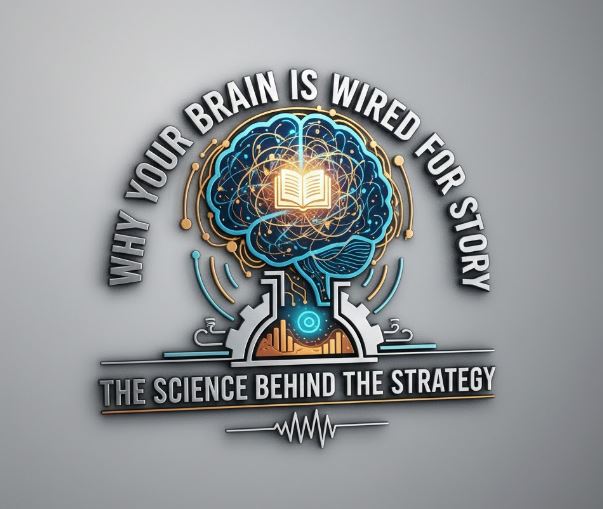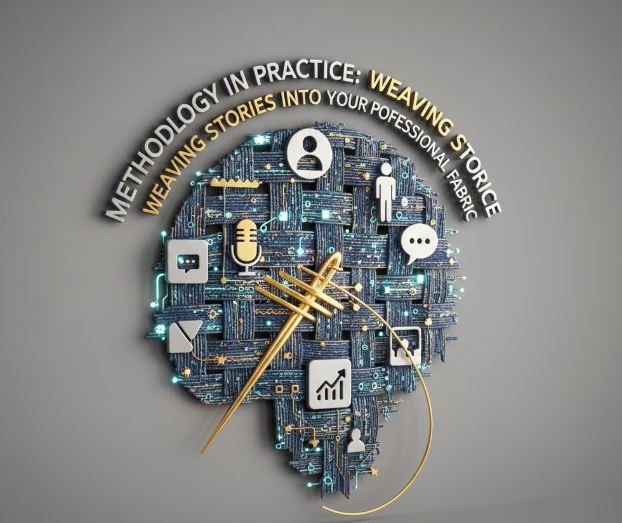Human attention is the ultimate currency. Every day, your clients, colleagues, and prospects are bombarded with a relentless stream of data, pitches, and advertisements. They have become adept at tuning out this noise. So, how do you break through? How do you make your message not only seen but felt, understood, and remembered? The answer lies not in a newer, shinier tool, but in an ancient one: the power of a well-told story. Moving beyond sterile facts and bullet points to craft a resonant narrative is the single greatest competitive advantage in modern influence. This definitive guide will provide you with a master blueprint for mastering effective storytelling for sales and communication, equipping you with the methodology to connect on a human level and inspire action.

Why Your Brain is Wired for Story: The Science Behind the Strategy
To appreciate the methodology of storytelling, we must first understand why it is so fundamentally powerful. The potency of effective storytelling for sales and communication is not anecdotal; it is rooted in neuroscience.
When you present information in a conventional, fact-based format—think spreadsheets, feature lists, or dry PowerPoint slides—you primarily engage two small areas of the brain: Broca’s and Wernicke’s. These regions are responsible for language processing. The listener deciphers the words and understands the literal meaning, but the information often fails to create a lasting impression or trigger a decision. It is processed and, too often, forgotten.
Contrast this with what happens during a story. When you describe a scenario, the brain of your listener lights up as if they were experiencing the event themselves. Mention the aroma of fresh coffee in a bustling morning office? The olfactory cortex activates. Describe the frustrating clunk of an old, slow machine? The auditory cortex engages. This neural coupling is the first superpower of story. But it goes deeper.
A compelling narrative also triggers a cocktail of neurochemicals that govern human behavior and memory:
- Cortisol: Released during moments of tension or conflict in the story, it heightens focus and helps sear memories.
- Dopamine: The “reward” chemical that keeps the audience engaged and provides a sense of satisfaction when the problem is resolved.
- Oxytocin: The “empathy” chemical that fosters feelings of trust, connection, and generosity towards the storyteller.
In essence, a story is a virtual reality simulation for the brain. It allows a prospect to not just hear about a problem, but to feel it. This biochemical and emotional connection is the engine of trust and the catalyst for action, forming the undeniable core of effective storytelling for sales and communication.

The Universal Story Blueprint: A Three-Act Structure for Business
While stories can feel magical, their construction is methodical. The most impactful business narratives follow a classic three-act structure, a framework that has captivated audiences for millennia. Let’s break down this blueprint.
Act 1: The Relatable Hero and The Encroaching Shadow
This is where you set the stage and hook your audience. The most critical rule here is this: The hero of your story is never you or your company. The hero is always your customer, your prospect, or a member of your audience.
- Introduce the Hero: Start by painting a picture of a person or a company your listener can identify with. “Meet David, a dedicated customer service lead at a growing e-commerce brand.”
- Establish the Ordinary World: Briefly describe their status quo. “For a while, things were manageable. His team used a basic ticketing system, and they were keeping their heads above water.”
- Introduce the Inciting Incident (The Shadow): This is the central problem, the pain point that disrupts the equilibrium. Be specific and empathetic. “But as sales doubled, the volume of customer queries exploded. Suddenly, his team was drowning. Response times slipped, customer satisfaction scores plummeted, and David found himself facing angry emails from the executive team. The pressure was immense.”
This act works because it creates immediate empathy. Your audience sees their own challenges reflected in the hero’s struggle.
Act 2: The Guided Journey and The Plan
In this act, the conflict deepens, and the path forward is revealed. The hero struggles with old, ineffective methods before finding a new way.
- Amplify the Struggle: Show the consequences of inaction. “David tried throwing more people at the problem, but hiring and training took too long. He tried implementing quick-fix workflows, but they only created more confusion. Morale on his team was at an all-time low.”
- Introduce the Guide (You): This is where you enter the narrative—not as a conquering hero, but as a wise and empathetic guide. You are the Gandalf, the Yoda. You have been through this before and you possess a plan (your product, service, or idea). “Feeling stuck, David attended a webinar where he learned about a philosophy of customer service centered on integrated, AI-powered platforms. It wasn’t just a tool; it was a new way of working.”
- Present the Plan: Briefly outline the solution, focusing on the approach, not just the features. “This method involved using a single platform to unify all customer communication, automate routine queries, and empower agents with real-time knowledge bases.”
This positioning is the heart of consultative selling. It frames you as a trusted advisor, which is the ultimate goal of effective storytelling for sales and communication.
Act 3: The Climactic Resolution and The Transformed World
This is the payoff, where the hero achieves success and a new, better reality is born.
- The Climax (The Solution in Action): Show how the hero implements the plan and overcomes the challenge. Don’t list features; describe the resulting benefits. “Within a month of implementing the new platform, David’s team had automated 40% of their routine queries. Agents were no longer bogged down with repetitive tasks.”
- The New World (The Transformation): This is the most crucial part. Vividly describe the positive emotional and business outcomes. “Now, David leads a proactive, empowered team. Customer satisfaction scores have reversed their trend and are now at an all-time high. Instead of fighting fires, David is in boardrooms presenting strategy, seen as a key driver of customer retention. He didn’t just get a new software; he regained his confidence and his team’s momentum.”
This vision of a transformed future is what your audience truly buys. They don’t buy CRM software; they buy organized efficiency and peace of mind.

Methodology in Practice: Weaving Stories into Your Professional Fabric
Understanding the blueprint is one thing; applying it is another. Here’s how to implement this methodology across different scenarios.
1. The Case Study Narrative:
This is the most direct application. Use the three-act structure to present a client success story. Start with the client’s initial challenge (Act 1), detail their journey of discovery and implementation (Act 2), and culminate with their quantifiable results and renewed vision (Act 3). This turns dry case studies into compelling social proof.
2. The “Why We Exist” Origin Story:
Use this in marketing, on your “About Us” page, or in networking events. Share the founder’s authentic story of a personal frustration or a moment of insight that led to the company’s creation. This isn’t about boasting; it’s about building human connection and brand authenticity.
3. The “Vision of the Future” Story:
Ideal for internal leadership communication or investor pitches. This story paints a vivid picture of the future your company or project is trying to build. “Imagine a world where no patient has to manage their chronic condition alone…” It connects daily tasks to a grand, inspiring purpose, motivating teams and attracting partners.
The Storyteller’s Toolkit: Essential Do’s and Don’ts

To ensure your narrative architecture is sound, adhere to these principles.
DO:
- Know Your Audience Deeply: Tailor your hero and their problem to the specific industry, role, and pain points of your listener.
- Embrace Authenticity: Use real details and emotions. Vulnerability and honesty build more trust than a flawless facade.
- Weave in Data as Proof: Use statistics to validate the story, not replace it. “This 40% increase in efficiency meant David’s team saved over 200 hours per month.”
- Practice Relentlessly: A story that seems effortless is the product of careful crafting and rehearsal.
DON’T:
- Make Yourself the Hero: This is the cardinal sin. You are the guide. The customer’s success is the climax.
- Overcomplicate the Plot: Stick to one central conflict and one core message. Avoid tangents.
- Forget the Call to Action (CTA): The end of your story is the perfect emotional launching pad for your CTA. “If you’re ready to explore what this kind of transformation could look like for your team, let’s schedule a brief discovery call.”
Final words | Your Narrative is Your Greatest Asset
Mastering effective storytelling for sales and communication is a journey of shifting your mindset from being an information provider to becoming a meaning maker. It is the recognition that people are not rational logic processors; they are emotional beings who make decisions based on how they feel and who they trust. By adopting the three-act blueprint, consistently placing your customer as the hero, and painting a vivid picture of their transformed world, you will not only capture attention—you will capture imagination, build unwavering trust, and become a truly influential communicator. Stop pitching. Start storytelling. The world is waiting to listen.

